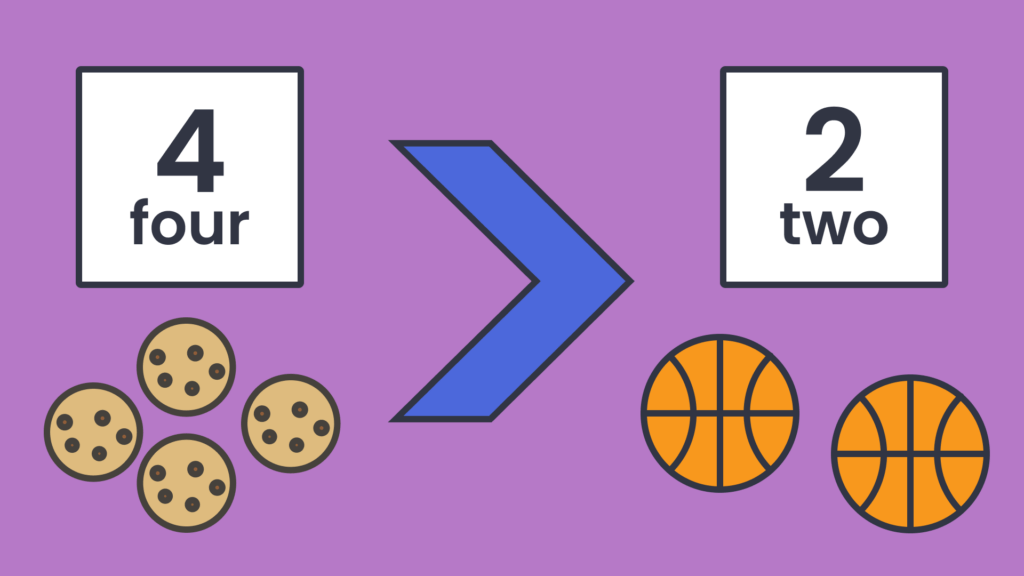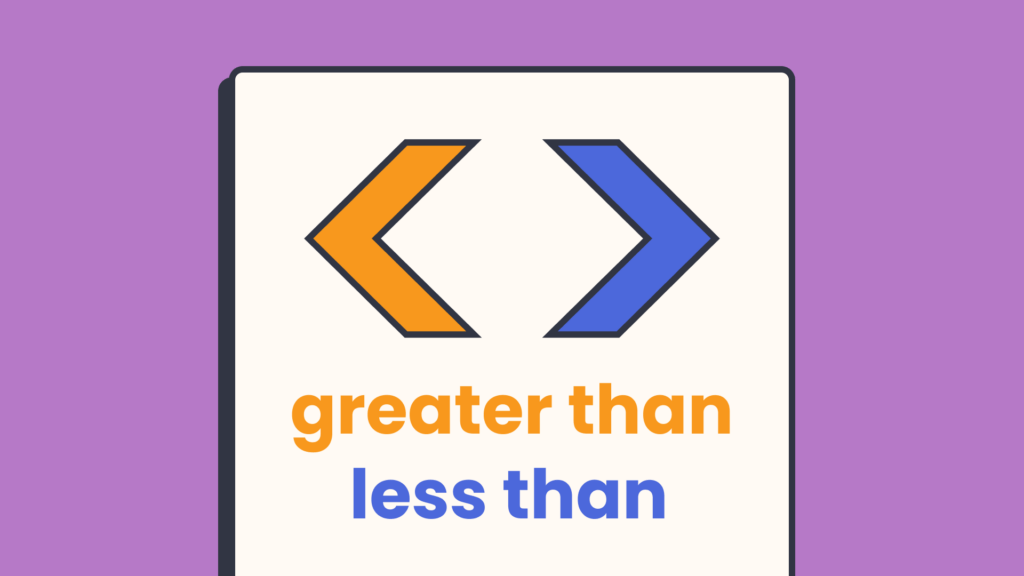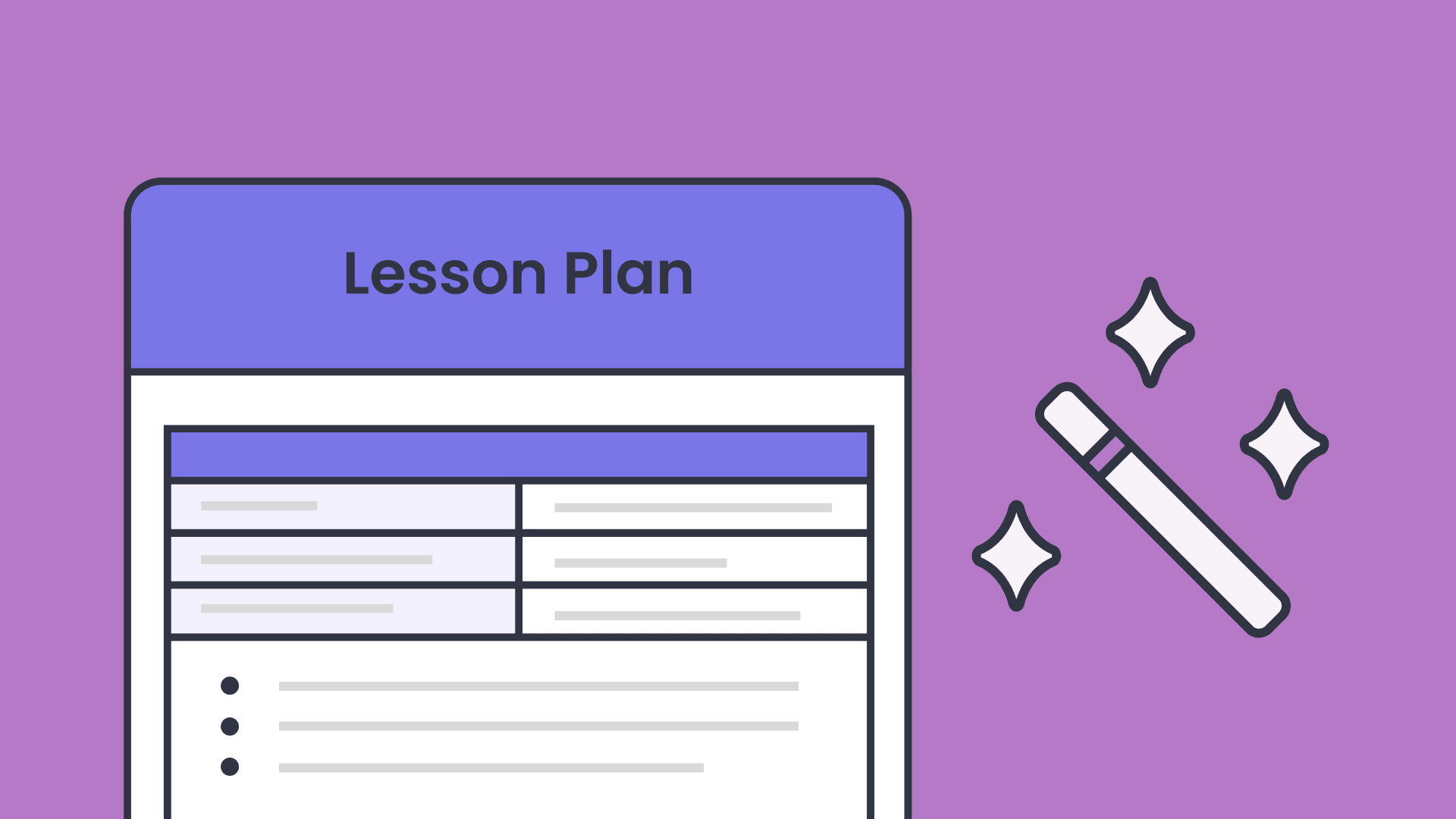Lesson ideas for teaching greater than and less than
In this guide
Introducing the greater than and less than signs
Teaching students the concept of comparing numbers using greater that (<) and less than (>) signs is key to helping them to develop a strong foundational understanding in math of place value, number operations, and algebra.
However, for many students, these symbols can seem confusing or daunting when they first encounter them. Our job as teachers is to dispel this confusion and show students that math is fun and playful, and nothing to be afraid of!
When students come to learn how to use the greater than and less than symbols, they should already have a firm understanding of the digits they are working with, be able to put them in order, and be able to count forwards and backwards, even if just from 0 to 10!
Alongside the greater than and less than symbols, students should also be introduced to the equals (=) sign, so that they can compare numbers that have the same value too.
When first introducing the greater than and less than symbols, the method that I have found to be the most successful is to describe the symbols as alligators or crocodiles! Show the children large printed versions of the symbols, and explain how the big wide mouth (the open end of the symbol) is a greedy crocodile, who always wants to eat the biggest amount!
Sometimes, I would even draw eyes and sharp teeth onto the symbol to emphasise the concept of the crocodile to the children. Then I would invite two students to the front of the class, and ask them each to hold up a different amount of fingers. I would then ask the rest of the class which fingers would my greedy crocodile want to eat!
The students would then shout and say, “Eddie’s fingers, he is holding up eight and Maddison is only holding up 4 fingers!” This then allows me to hold up the correct sign in between the two students!
At this point, you could then write the number sentence on your whiteboard for the students to see: 4 < 8. In my experience, it’s always best to repeat this teaching point a few times, asking different students to come to the front and hold up their fingers, or even to write numbers on mini whiteboards for the rest of the class to compare.
Each time, write the number sentence on the whiteboard so that you are modeling to your students how to record this as a number sentence. Once you have reinforced this learning altogether as a group, it’s time for your students to participate in some independent learning activities to reinforce their learning and to investigate for themselves!
The rest of this blog contains some ideas of interactive, engaging and hopefully fun activities that you can try out in your classroom when teaching this key mathematical concept!

Using real-life examples to explain comparison
When young learners first encounter a mathematical concept, it is always a good idea to start with real life, concrete resources that they can see, understand and manipulate, before moving onto the more abstract concept of written numbers.
Something that I have found to be most successful is to use food! What child hasn’t compared their plate of cookies to somebody else’s to make sure that it’s fair?! In the past, to ensure that my young learners have really grasped the concept of greater than and less than, I have set up a carousel of activities on each table in the classroom. You could have different foods or snacks on each table, for example cookies, apples, marshmallows and M&Ms.
As the students visit each table, their task is to pick two number cards, count out each amount using the snack on that table, and then use some greater than and less than cards to compare the amounts.
For students who need a challenge, you could use cards where the numbers are written in words, or perhaps simple addition and subtraction number sentences that the students have to work out before they can compare.
For your learners who are more active, you could go outside and get them to run some laps of your school field in a set amount of time! Once they have completed this activity twice, they can then compare their two scores using the greater than and less than symbols, perhaps writing it as a number sentence using chalk on the playground.
Another way to practice this mathematical skill, which perhaps will engage some of your most reluctant learners, is to use recent sports scores! Find out the scores of games that have occurred in your area or nationally/internationally recently, ideally including games that your students might be excited about! Print out the scores of the teams, and ask students to use the greater than, less than, and equal to signs to compare the scores!
In my experience, once the students have been introduced to these mathematical symbols, it is best to give them lots of time to use these symbols in real life, practical contexts. When the context makes sense to the children, and isn’t abstract or confusing, they can focus on understanding how the symbol is used, and practice using it in a variety of ways!

Fun classroom games and songs to reinforce learning
Another way to reinforce new learning is to play games and sing songs!
Check out Comparing Whole Numbers, which is a Numberock song that follows Slater the hungry alligator as he compares foods with different values before deciding which to eat!
I have learned over my decade or more of teaching that some of the best learning happens when students don’t realize it’s happening, so games are the perfect way to make this happen!
These are some games that I have used personally when teaching about the greater than and less than symbols:
1) Card comparing
Put students into pairs, and give them a pack of playing cards. They should lay the deck face down in one pile, and each take a card. They then need to compare the cards, using the correct terminology e.g.
“9 is greater than 7.”
The student with the highest card wins each round!
Students can use a mini whiteboard to keep a tally to see who is the overall winner once they have gone through the whole deck!
NB: It might be an idea to assign a number to the picture cards, for example Jack = 11, Queen = 12 and King = 13.
2) Comparing relay
Take your students outside, or into a hall, and set them into teams behind a line.
- At the other end of the field/hall, place a hoop for each team, filled with number cards. The cards can be from 0-10, or up to 100 if your students have encountered higher numbers before.
- Then the first student in each team should race to pick up a number card.
- When they get back behind the line, the second player runs to collect a number card.
- When they get back, those two players should compare the cards, putting them into place with a greater than/less than symbol.
- If they get it right, they get a point and the third and fourth players then take their turn!
In my experience, students love games like this, and they often show an excellent sense of camaraderie and sportsmanship toward each other, alongside practicing key mathematical concepts!

Visual tools and anchor charts for greater than less than
Once you have spent a lesson or two really focusing on using the greater than and less than symbols to compare objects and numbers, it can be useful for your students to then have some visual aids up around your classroom that they can refer back to.
Perhaps on your Math wall you can create some large greater than and less than symbols, with crocodile eyes and teeth, along with a reminder sentence such as ‘The crocodile eats the biggest number!’
You could even make this an interactive display, sticking some velcro onto the back of number cards so that your students can create their own comparing number sentences using the symbols.
It might also be useful to have some sample comparison number sentences up on your board for example 4<10 and 5 = 5 and 8>2. These can then be referred to if a student encounters a comparing numbers problem and needs reminding of what to do!
It might also be fun to give your students some time to create their own anchor chart that can be slotted into their math books.
On a slip of paper, ask them to write down or draw everything they have learned about using the greater than and less than symbols. This could be used as a bookmark, or perhaps glued to the inside cover of their math book so that students can refer back to this whenever they need to!
Activities and practice ideas for independent learning
After some direct teaching about the greater than and less than symbols, your students may benefit from having the opportunity to participate in further activities that can be completed independently.
When students can complete a task without any adult intervention, it can help to boost their confidence, their self motivation, and increase their understanding of their own metacognition. This is why it is really important that we know and understand the capabilities of our students, so that we can pitch independent learning activities appropriately.
1) Picture comparing
For your younger learners, or those who need a little more support, lay out cards that depict different amounts of animals, fruit, dinosaurs etc.
Challenge your students to pick two cards, lay them side by side, and then use lolly sticks to create the correct symbol in between to compare the amounts on the cards.
2) Comparing Scavenger Hunt
Give each student a set of cards that depict the greater than, less than and equal to symbols.
- Take them outside, where you have hidden number cards in preparation.
- Students need to run around the area, find two number cards, then bring them back to your base to compare them.
- If they get the comparison correct, they should replace the number ready for someone else to find and then hunt for two more!
This sort of activity can really engage even your most reluctant learners; many students become more willing to take risks and try new things if they are free to move about rather than stick behind a desk!
3) Fill in the symbol worksheets
Sometimes, a simple worksheet can really do the job, allowing your students to show you what they have learned, simple to assess, and requires minimal preparation or adult support!
Simply provide your students with a worksheet with number pairs such as 8 _____ 10 and ask your students to draw or write the correct symbol into each space.
Teaching early math is incredibly rewarding because often, you are the first to introduce your students to such a variety of concepts and knowledge that they will continue to use for the rest of their time in school, and beyond!
Being able to introduce new mathematical concepts such as the greater than and less than symbols in a variety of fun, engaging and creative ways can ensure that these concepts stick in the minds of your students, making them into more confident and more able mathematicians!

Ruth Litchfield
briefcase iconEducator & Education Content Creator
Ruth is an experienced primary school educator of over a decade, and an Educational Content Creator. She specialises in creating fun and engaging activities that require minimal resources and cover multiple curriculum areas.
Other posts
Want more content like this?
Subscribe for blog updates, monthly video releases, trending topics, and exclusive content delivered straight to your inbox.
















